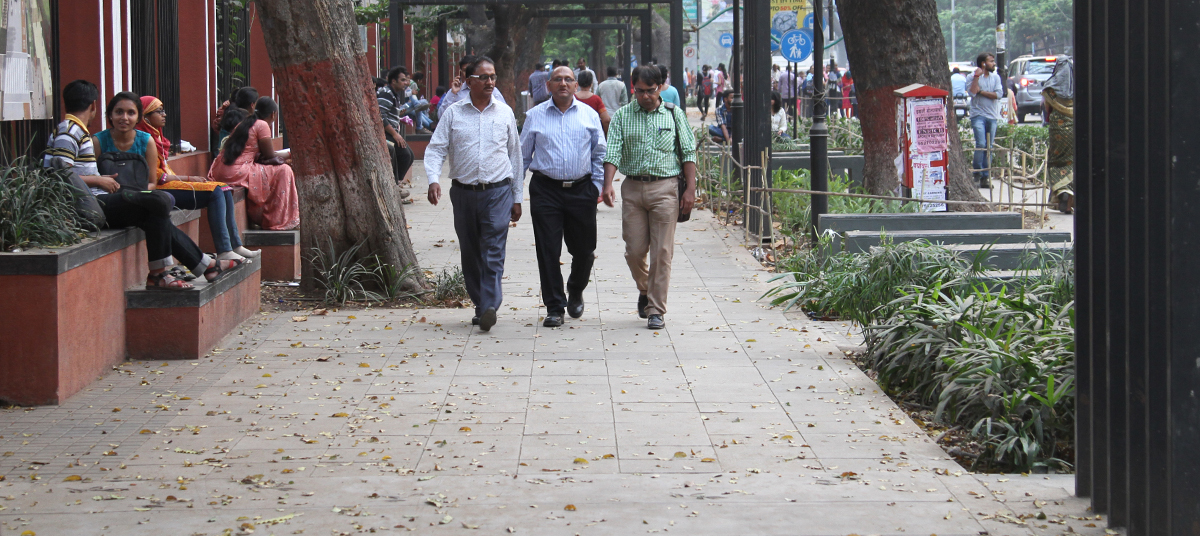Have you ever wondered what truly makes a city? Is it just the layers of history seen through the built forms, or is it also the people and their interactions, which breathes life into these spaces on the streets? Streets in Indian cities have always been filled with this magic, weaving stories through the interplay of people travelling through the space for travel, business and other activities, inturn giving them a unique identity. Occupying approximately one-fifth of the total urban land area, streets are amongst the most valuable urban assets of any city.
However, India is at the crossroads of an ever-increasing demand for transportation and vehicle growth, due to rapid urbanisation, economic development, and growing wealth among households. This has made it critical for Indian cities to introduce sustainable mobility measures, to ensure a safe, equitable, and livable future for its people.
With this aim, the Ministry of Housing and Urban Affairs, under the Smart Cities Mission, launched ‘The Complete Streets Framework Toolkit ’ with technical inputs from ITDP India Programme, on 26th February 2019, in New Delhi. It is aimed at guiding the 100 selected cities to prioritise walking, cycling, and public transport over cars, unlocking the inherent potential of the street space.
The toolkit is intended to be used by decision makers, city officials, engineers, planners, and consultants to develop a complete streets policy framework, design and implement as per standards and guidelines, and evaluate the progress.

The fault in our streets
Walking and cycling are critical transportation modes for the people in Indian cities, providing low-cost and a healthy means of travel. In spite of the surge in the use of cars and two-wheelers, nearly fifty percent of the population across the country still depend on walking and cycling, both as a primary mode of transport and for last mile connectivity. Yet, the ground reality is starkly different, with only one percent of all streets in India, having walkable footpaths.
The most vulnerable users of the street, the pedestrians and cyclists, are left to face the brunt of unsafe streets. Road fatality rates in India have surged to 20-25 times that of developed countries. With 56 pedestrian deaths and 10 cyclists deaths per day, reported in 2017 by the Ministry of Road Transport and Highways, the streets in India are certainly not safe for its people.
Increased traffic congestion and road fatality rates, impacting the liveability and well being of the citizens, has raised the need to invest more in improving the sustainable transport infrastructure in the country.
MoHUA paves the way for a walkable India
The Smart Cities Mission has thus emphasised the need for the creation of pedestrian-friendly infrastructure, promoting walking and cycling as an integral part of urban development. In order to achieve this, the top 100 cities need to redesign and transform over 40,000 km of city streets into complete streets by 2030. This will help the Indian transport culture get back to more sustainable ways while ensuring citizens reclaim their streets from the clutches of cars.
The transformation, in the name of complete streets, aims to redesign Indian streets with high-quality footpaths, segregated cycle tracks, safe pedestrian crossing and regulated on-street parking; basically, improve accessibility for all citizens, regardless of age, gender, and physical ability.
The toolkit consist of seven volumes: i.Complete Street Policy Framework ii.Complete Streets Policy Workbook iii.Complete Streets Planning Workbook iv.Complete Streets Design Workbook v.Complete Street Implementation Workbook vi.Complete Streets Evaluation Metrics vii.Complete Streets Best Practices. The step-by-step approach adopted aims at helping the cities in their decision making process, for bringing forth the transformation of its streets.
The toolkit begins with guiding cities to embed complete streets best-practises into a policy to set the big-picture vision. Clarity on the vision can better guide decision-making by the state and city administrators. Master planning follows suit, creating city-wide walking and cycling networks to ensure continuity and integration with public transport. All public transport commuters begin and end their journey by foot or cycle, thus, the impact of such network planning is far-reaching.
Network planning also helps cities identify particular streets that can be retrofitted or redesigned with footpaths and cycle tracks depending on the adjoining urban environment. The Design Workbook provides best-practise standards, guidelines, and the processes for designing complete streets by city officials, engineers, urban designers and consultants. Designs can look great on paper, but high-quality implementation of footpaths and cycle tracks is the game-changer. The Implementation Workbook is more of a check-list for urban designers, municipal engineers, and contractors on how to implement footpaths in complex urban environments. Finally, the progress must be monitored – the Evaluation Metrics details key performance indicators for monitoring transformation.
The Complete Streets Toolkit will help sketch a streetscape with opportunities for the millions whose lives would significantly be improved – especially women, children, and differently-abled people. A conscious effort to care for the most vulnerable members of the society is indeed a reflection of a developed country and a smart city. Afterall, as Shakespeare put it, what is a city but the people?




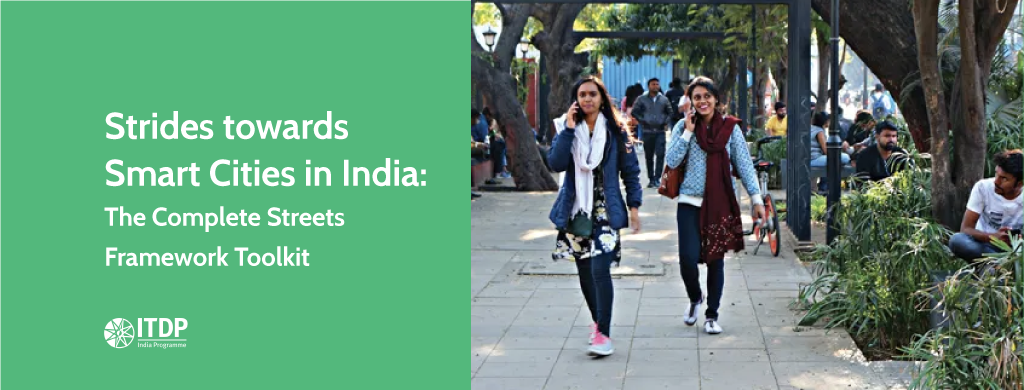
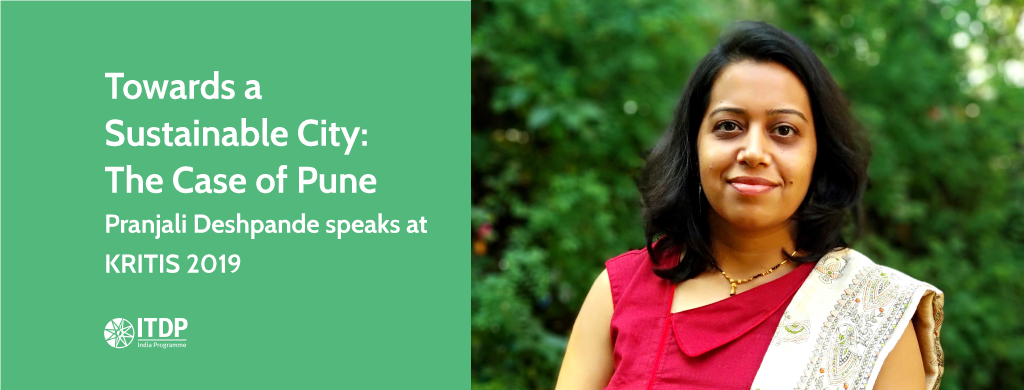
 JM Road, Pune
JM Road, Pune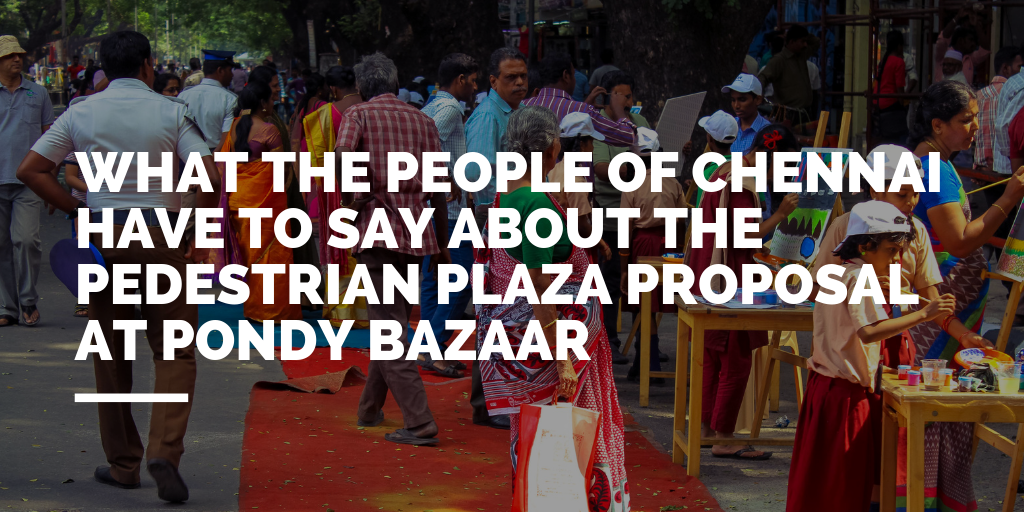


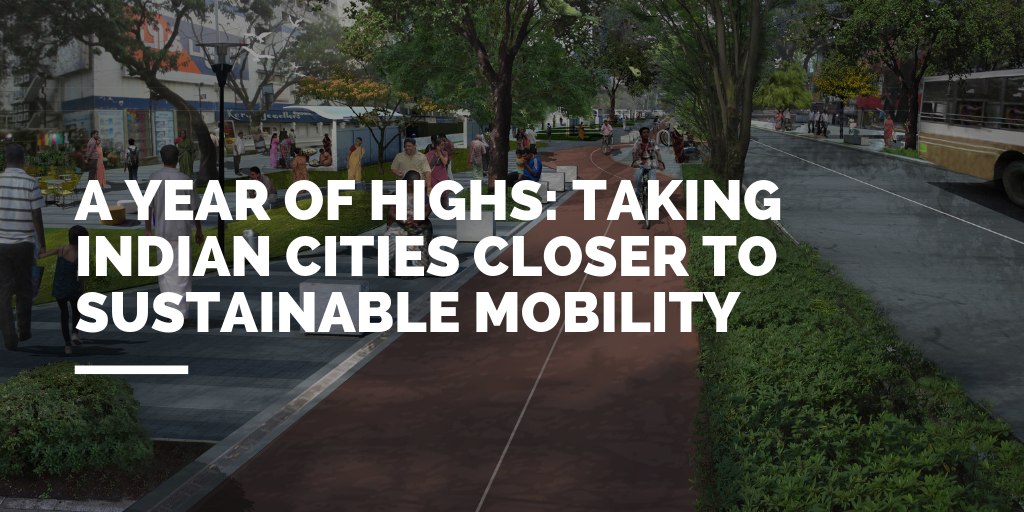

















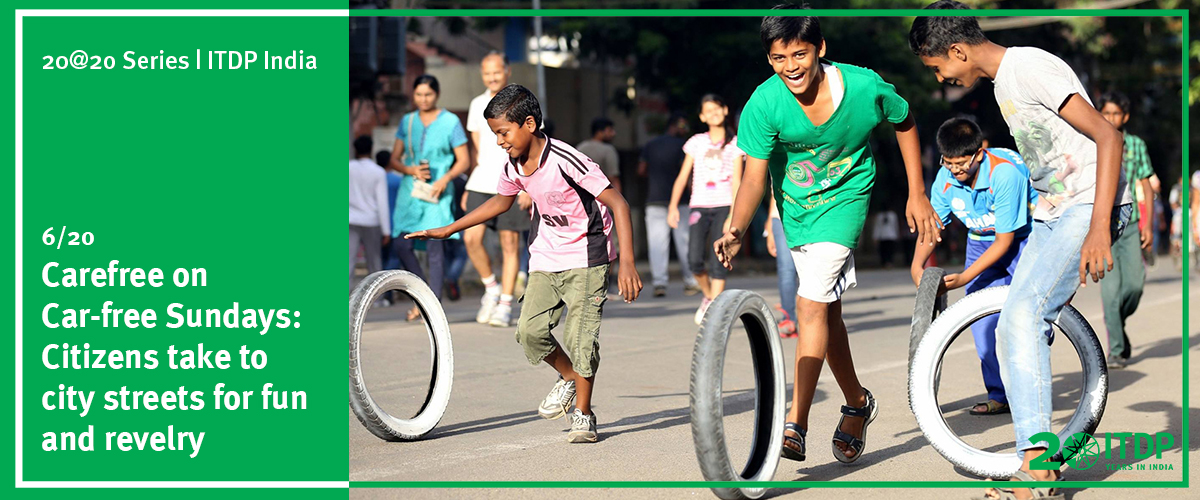
 India’s first car-free Sunday in Ahmedabad in 2012
India’s first car-free Sunday in Ahmedabad in 2012 People enjoying hop-scotch at the car-free Sunday in Coimbatore
People enjoying hop-scotch at the car-free Sunday in Coimbatore Father and daughter bonding over skipping at the car-free Sunday in Chenani
Father and daughter bonding over skipping at the car-free Sunday in Chenani